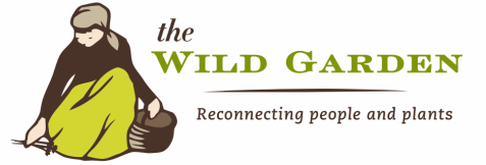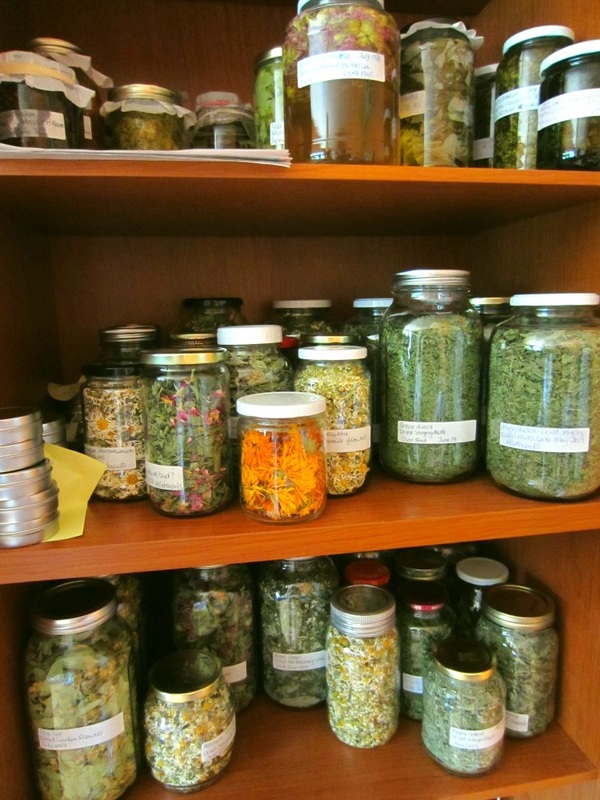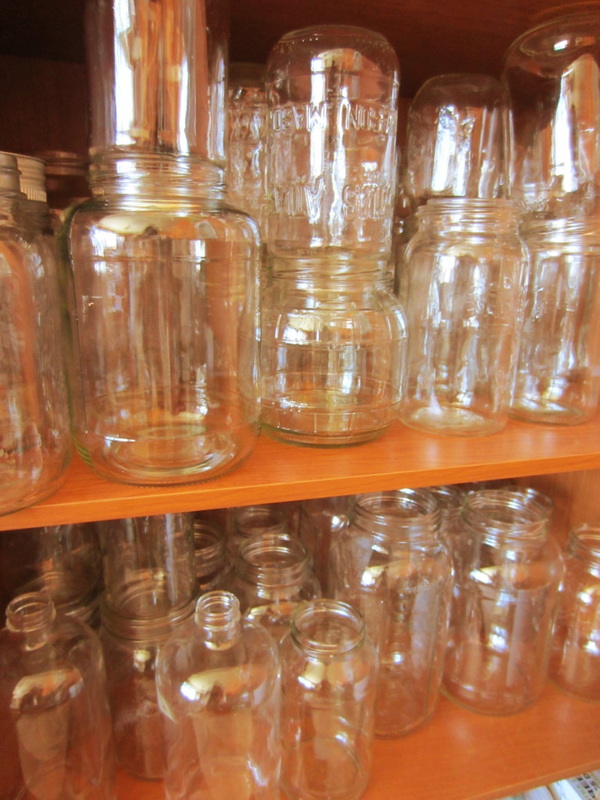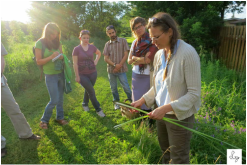(This is a longer, edited post of an article that appeared in the March CSA newsletter.)
More and more I find myself measuring the passage of time in mason jars. When all the jars I own are full to bursting, the shelves sagging under their weight and I have to scrounge through recycling bins to find another one to press into service, I don’t have be outside to know it’s late summer/early fall. Full Jar season is bountiful and abundant with the fruits of harvest and the pantry is a riot of summer preserved.
More and more I find myself measuring the passage of time in mason jars. When all the jars I own are full to bursting, the shelves sagging under their weight and I have to scrounge through recycling bins to find another one to press into service, I don’t have be outside to know it’s late summer/early fall. Full Jar season is bountiful and abundant with the fruits of harvest and the pantry is a riot of summer preserved.
Now begins Empty Jar season. I have, over the last few months, steadily emptied the contents of one jar after another. I go through 5 or 6 pints of homemade bone broth a month. There’s a 4 quart sized hole in the freezer that used to be taken up by apple sauce made from feral apples I picked in the fall. In the fridge there are mostly empty jars with just a spoonful of jam or jelly left in the bottom, or a bit of brine from sauerkraut and pickled turnips. These precious dregs find their way into sauces, dressings, glazes and marinades, before the jars come full circle again.
At this time of year there is always a collection of empty jars and bottles to wash. I stand at the sink, plunge my hands into the hot, soapy water and peel off labels. I contemplate the recent history that those labels capture and record. For the next few minutes, I leap and travel through time.
There is the day in July when I gathered red raspberry leaves, setting out early in the morning before it got too hot. After I filled all the paper bags I could carry on my bike, I ate lunch under the shade of a large maple tree, my back resting against its sturdy trunk, stretching my legs out alongside the tree’s roots, feeling utterly connected to everything around me. The empty jar that held dried cleavers releases a deep green, mineral scent when I take off the lid. I inhale molecules of May, in awe that traces of the plant still linger in this way. Suddenly it’s the end of November, the last day before the first snow storm of the season that would mark the end of my root harvesting. I gathered enough dandelion greens that day to fill one jar and those greens made their way into tea, soups and stews and powders throughout the long winter.
At this time of year there is always a collection of empty jars and bottles to wash. I stand at the sink, plunge my hands into the hot, soapy water and peel off labels. I contemplate the recent history that those labels capture and record. For the next few minutes, I leap and travel through time.
There is the day in July when I gathered red raspberry leaves, setting out early in the morning before it got too hot. After I filled all the paper bags I could carry on my bike, I ate lunch under the shade of a large maple tree, my back resting against its sturdy trunk, stretching my legs out alongside the tree’s roots, feeling utterly connected to everything around me. The empty jar that held dried cleavers releases a deep green, mineral scent when I take off the lid. I inhale molecules of May, in awe that traces of the plant still linger in this way. Suddenly it’s the end of November, the last day before the first snow storm of the season that would mark the end of my root harvesting. I gathered enough dandelion greens that day to fill one jar and those greens made their way into tea, soups and stews and powders throughout the long winter.
The jars now dry and clean are taken into the apothecary and it is here that the passage of time is most pronounced, as the space taken up by jars with herbs in them is significantly less compared to the jars now filled only with air and expectancy. I don’t feel sad or anxious about this seeming scarcity though, rather I feel content and deeply grateful to have been the medium through which so many plants have passed.
I recently read an article by an herbalist I admire, Renee Davis. She wrote about the herbalist’s chain of custody that connects and embeds our work in the living landscape and that offering plants to the community also offers a deep understanding of the relationships and interactions that unfold between the plants, people and the ecosystem. “It’s as if we have one hand stretching into the landscape; formulating, crafting. And with the other, we can offer another a connection, language and, in some ways, a truth.” When I look at all those empty jars on my shelves I feel honoured to have a role in that chain of custody.
All last year during the growing season, I grew and gathered plants. I dried them carefully and lovingly. I prepared, blended and formulated the plants and blessed them with healing intention. For a few brief months they were under my care, gathered from the earth, stored properly, and finally sent back out into the world, into the homes and hands of people in the community, where, in their experience of the plants, they just may have discovered a sense of that connection and perhaps even a truth.
Empty Jar season is not about lack or endings, deficiency or a desire to possess something anew. I perceive it as the closing of a loop and the beginning of a season filled with anticipation and promise. It is the promise of once again reaching my hand to the earth, connecting with the landscape, tending to the plants, and taking them into custody with reverence and respect before sharing them with the community. Those jars, waiting and open to receive, fill me with excitement for what’s to come.
I recently read an article by an herbalist I admire, Renee Davis. She wrote about the herbalist’s chain of custody that connects and embeds our work in the living landscape and that offering plants to the community also offers a deep understanding of the relationships and interactions that unfold between the plants, people and the ecosystem. “It’s as if we have one hand stretching into the landscape; formulating, crafting. And with the other, we can offer another a connection, language and, in some ways, a truth.” When I look at all those empty jars on my shelves I feel honoured to have a role in that chain of custody.
All last year during the growing season, I grew and gathered plants. I dried them carefully and lovingly. I prepared, blended and formulated the plants and blessed them with healing intention. For a few brief months they were under my care, gathered from the earth, stored properly, and finally sent back out into the world, into the homes and hands of people in the community, where, in their experience of the plants, they just may have discovered a sense of that connection and perhaps even a truth.
Empty Jar season is not about lack or endings, deficiency or a desire to possess something anew. I perceive it as the closing of a loop and the beginning of a season filled with anticipation and promise. It is the promise of once again reaching my hand to the earth, connecting with the landscape, tending to the plants, and taking them into custody with reverence and respect before sharing them with the community. Those jars, waiting and open to receive, fill me with excitement for what’s to come.




 RSS Feed
RSS Feed